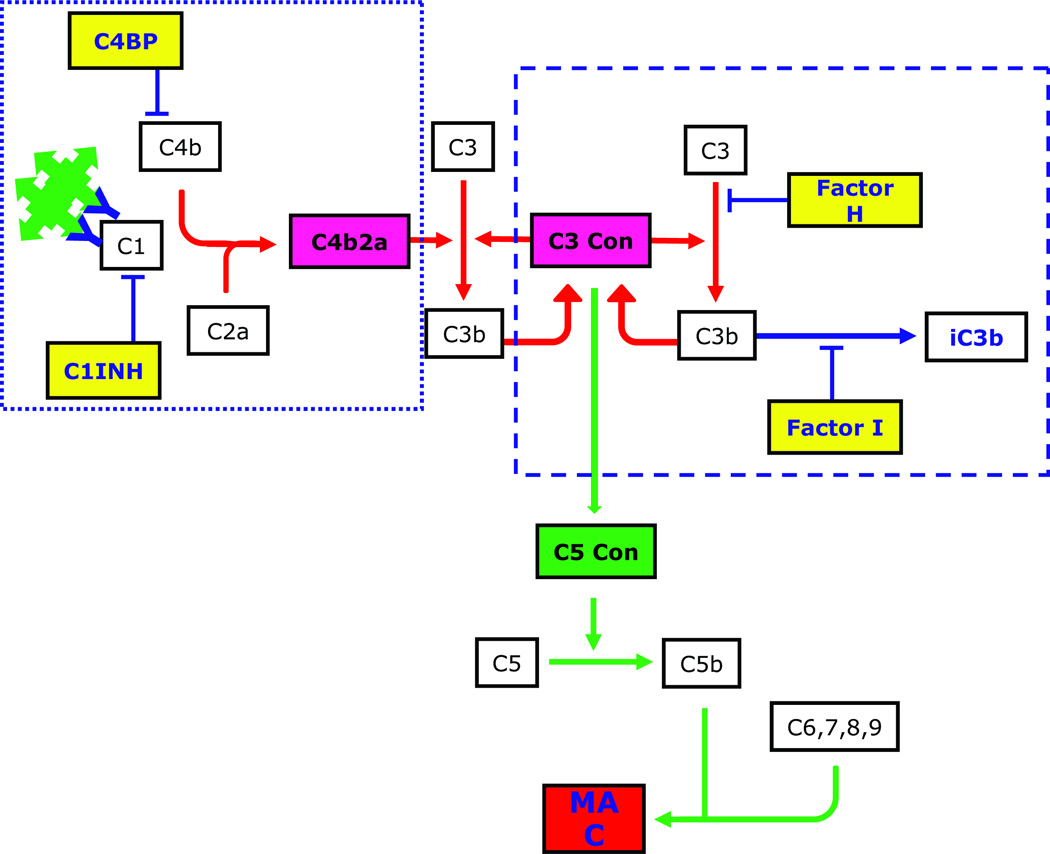Figure 2.

The complement cascade is initiated by the CP (dotted rectangle), AP (dashed rectangle) or LP (not shown). The principle trigger of the CP, immunoglobulin-complexed antigen, is the driving force for C3 deposition in immunoglobulin-positive MPGN (see Figure 1B). Two or more adjacent IgG antibodies provide the structural framework for activation of C1, which cleaves C2 and C4 to generate C2a and C4b, respectively. These two proteins form the CP C3 convertase. The AP is constitutively active, a process that is referred to as ‘tick over’. Binding of CFB, CFD and properdin to hydrolyzed C3 or to C3b leads to formation of the AP C3 convertase C3bBb. This process also generates C3a, a potent anaphylatoxin. When an additional C3b molecule associates with C3 convertase, C5 convertase is formed, initiating the TCC and leading to the generation of MAC. Fluid-phase regulators of the CP include C4BP and C1INH, and of the AP, CFH and CFI (shown in yellow rectangles).
